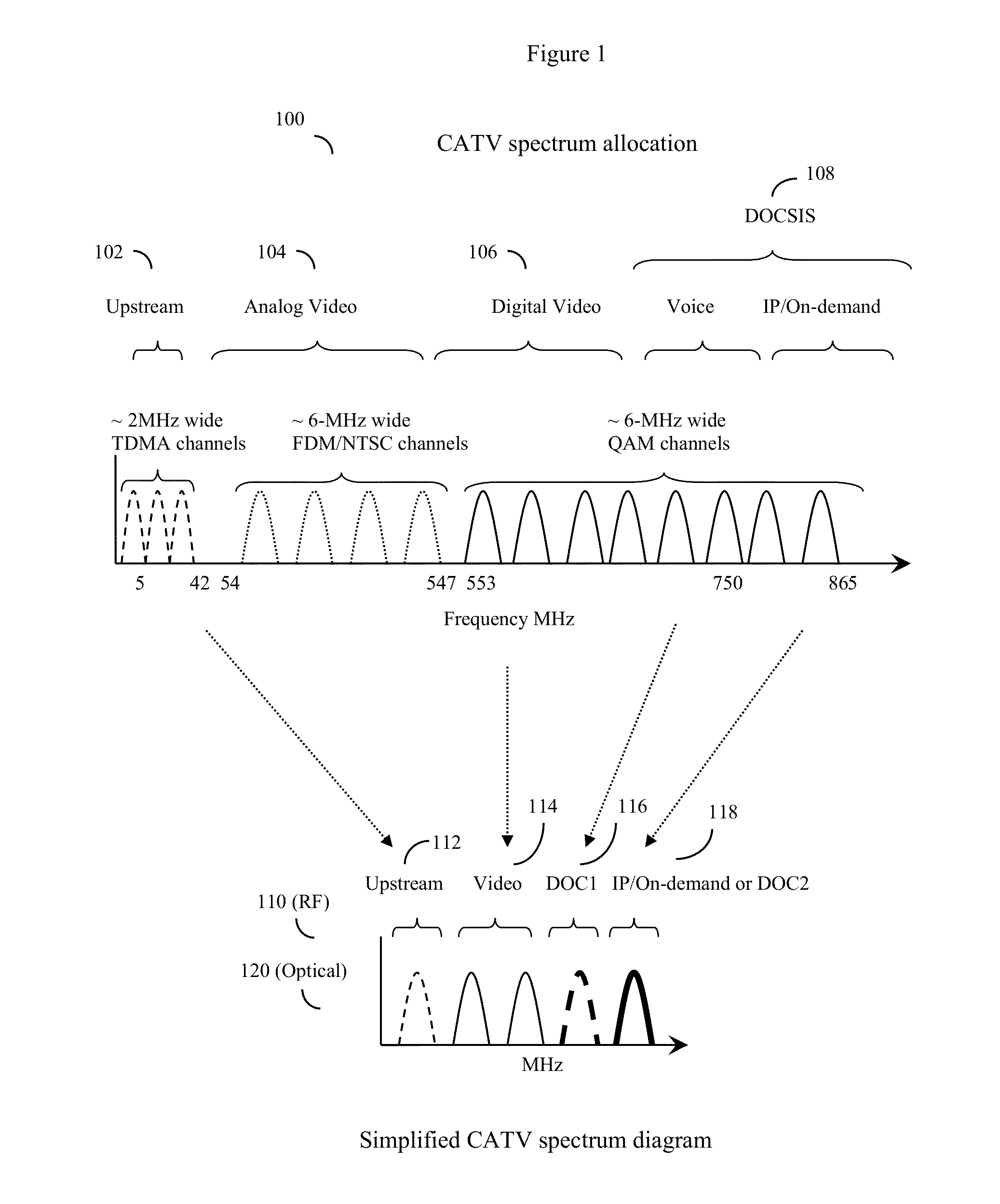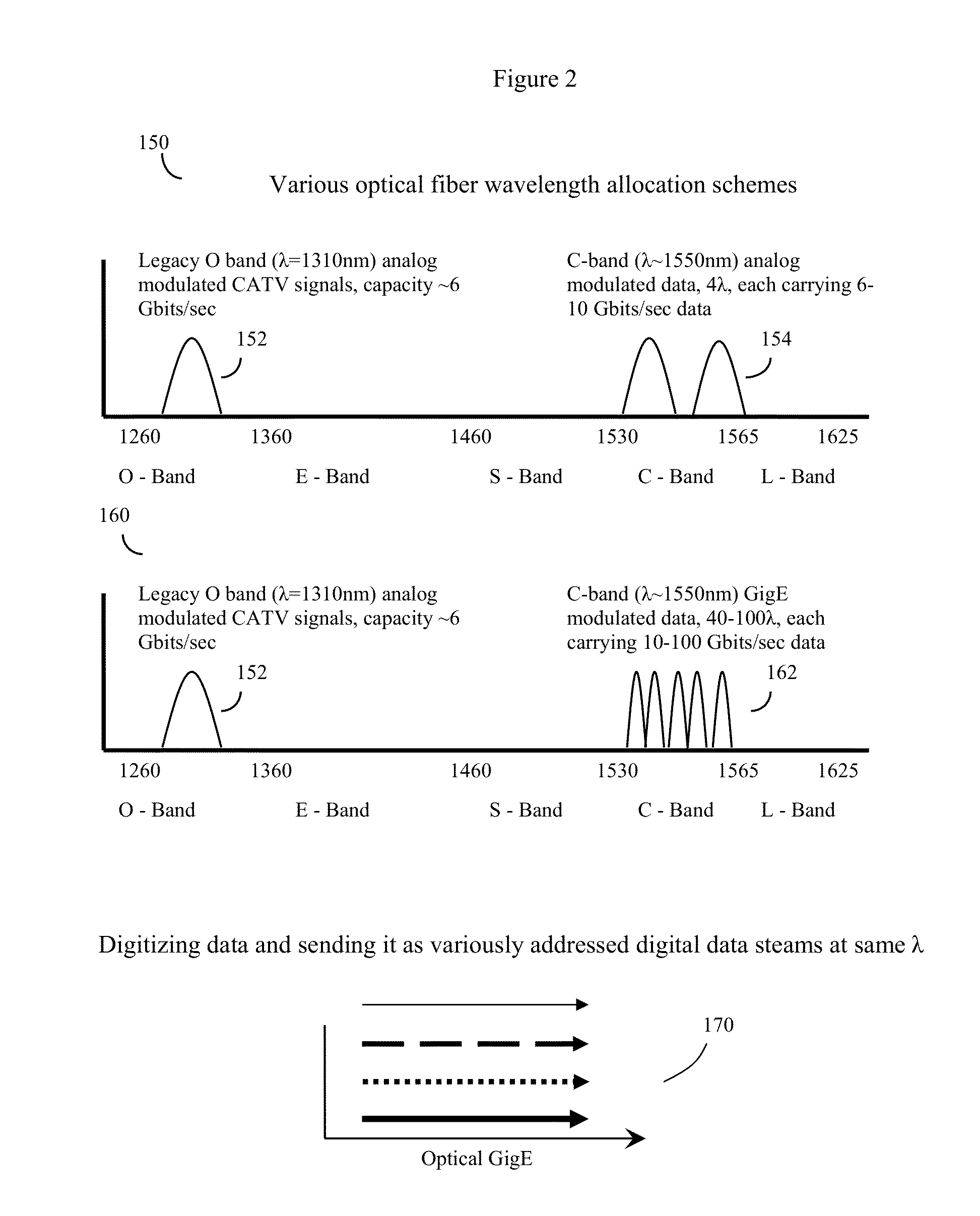Method of transforming hfc CATV analog fiber transmission to digital fiber transmission
a technology of hfc catv and analog fiber, applied in the field of transforming hfc catv analog fiber transmission to digital fiber transmission, can solve the problems of inability to optimize the optical version of the basic rf catv waveform to cope with the available optical fiber spectrum, and achieve the effect of minimizing the burden of writing and minimizing the cost of transitioning
- Summary
- Abstract
- Description
- Claims
- Application Information
AI Technical Summary
Benefits of technology
Problems solved by technology
Method used
Image
Examples
Embodiment Construction
[0026]Nomenclature: In this specification, the term “legacy signals” when pertaining to RF waveforms, will often be used to describe various older standard CATV RF signals such as NTSC (television) signals, FM radio signals, set top box signals and the like. It should be understood, however, that the invention's methods will in fact operate with any type of RF signal. Thus the term legacy signals, although intended to improve readability by reminding the reader that the invention's methods are particularly useful for coping with various CATV legacy RF waveforms, is not otherwise intended to be limiting.
[0027]Legacy signals, when pertaining to optical fiber transmission methods, will generally refer to prior art methods which simply transformed the RF waveforms, such as QAM RF waveforms, into optical waveforms while retaining the essential characteristics (e.g. shape) of the RF waveforms.
[0028]Continued Discussion:
[0029]Although this particular specification is more focused on the op...
PUM
 Login to View More
Login to View More Abstract
Description
Claims
Application Information
 Login to View More
Login to View More - R&D
- Intellectual Property
- Life Sciences
- Materials
- Tech Scout
- Unparalleled Data Quality
- Higher Quality Content
- 60% Fewer Hallucinations
Browse by: Latest US Patents, China's latest patents, Technical Efficacy Thesaurus, Application Domain, Technology Topic, Popular Technical Reports.
© 2025 PatSnap. All rights reserved.Legal|Privacy policy|Modern Slavery Act Transparency Statement|Sitemap|About US| Contact US: help@patsnap.com



